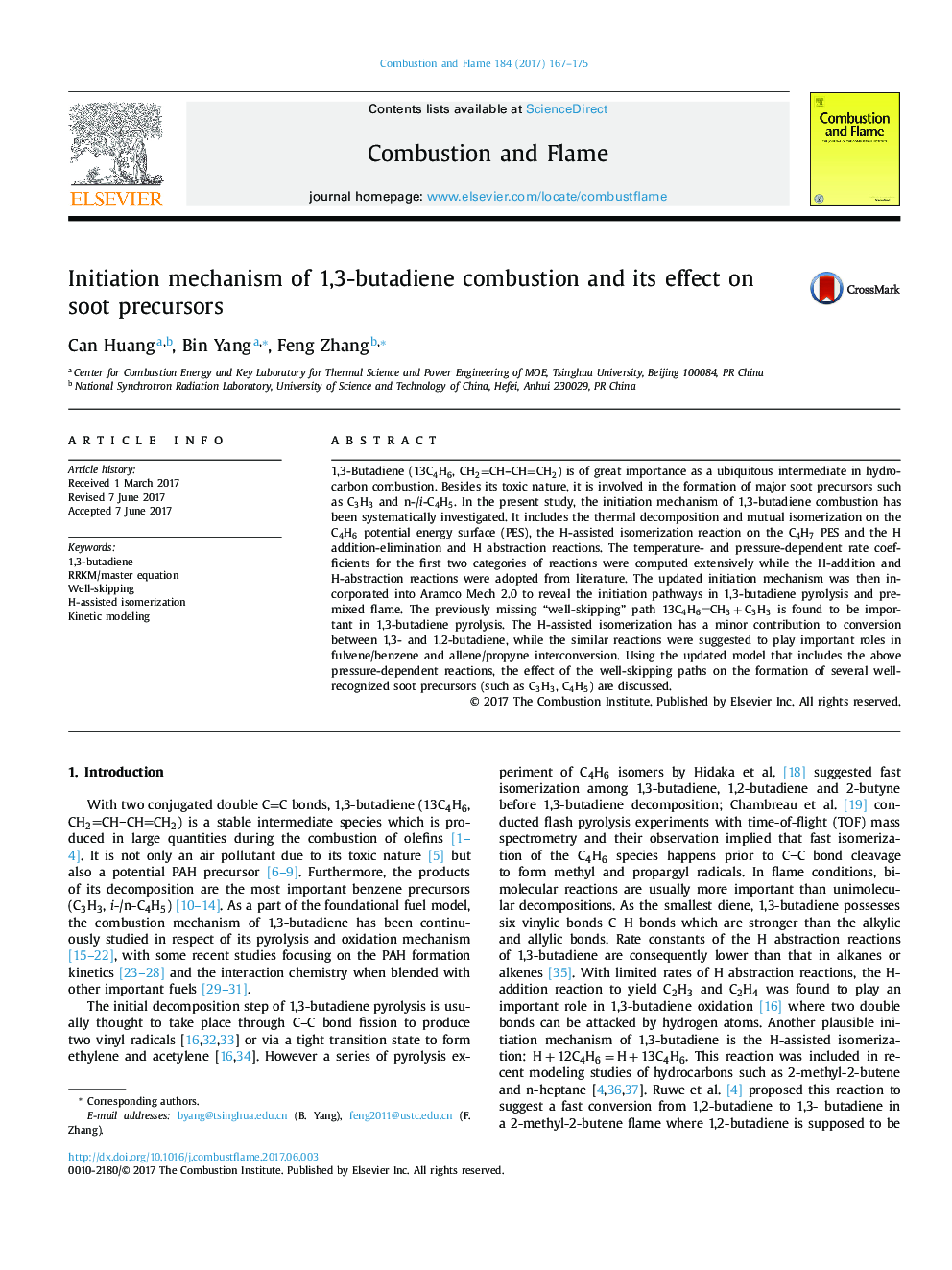| Article ID | Journal | Published Year | Pages | File Type |
|---|---|---|---|---|
| 4764455 | Combustion and Flame | 2017 | 9 Pages |
Abstract
1,3-Butadiene (13C4H6, CH2CHCHCH2) is of great importance as a ubiquitous intermediate in hydrocarbon combustion. Besides its toxic nature, it is involved in the formation of major soot precursors such as C3H3 and n-/i-C4H5. In the present study, the initiation mechanism of 1,3-butadiene combustion has been systematically investigated. It includes the thermal decomposition and mutual isomerization on the C4H6 potential energy surface (PES), the H-assisted isomerization reaction on the C4H7 PES and the H addition-elimination and H abstraction reactions. The temperature- and pressure-dependent rate coefficients for the first two categories of reactions were computed extensively while the H-addition and H-abstraction reactions were adopted from literature. The updated initiation mechanism was then incorporated into Aramco Mech 2.0 to reveal the initiation pathways in 1,3-butadiene pyrolysis and premixed flame. The previously missing “well-skipping” path 13C4H6CH3Â +Â C3H3 is found to be important in 1,3-butadiene pyrolysis. The H-assisted isomerization has a minor contribution to conversion between 1,3- and 1,2-butadiene, while the similar reactions were suggested to play important roles in fulvene/benzene and allene/propyne interconversion. Using the updated model that includes the above pressure-dependent reactions, the effect of the well-skipping paths on the formation of several well-recognized soot precursors (such as C3H3, C4H5) are discussed.
Related Topics
Physical Sciences and Engineering
Chemical Engineering
Chemical Engineering (General)
Authors
Huang Can, Yang Bin, Zhang Feng,
